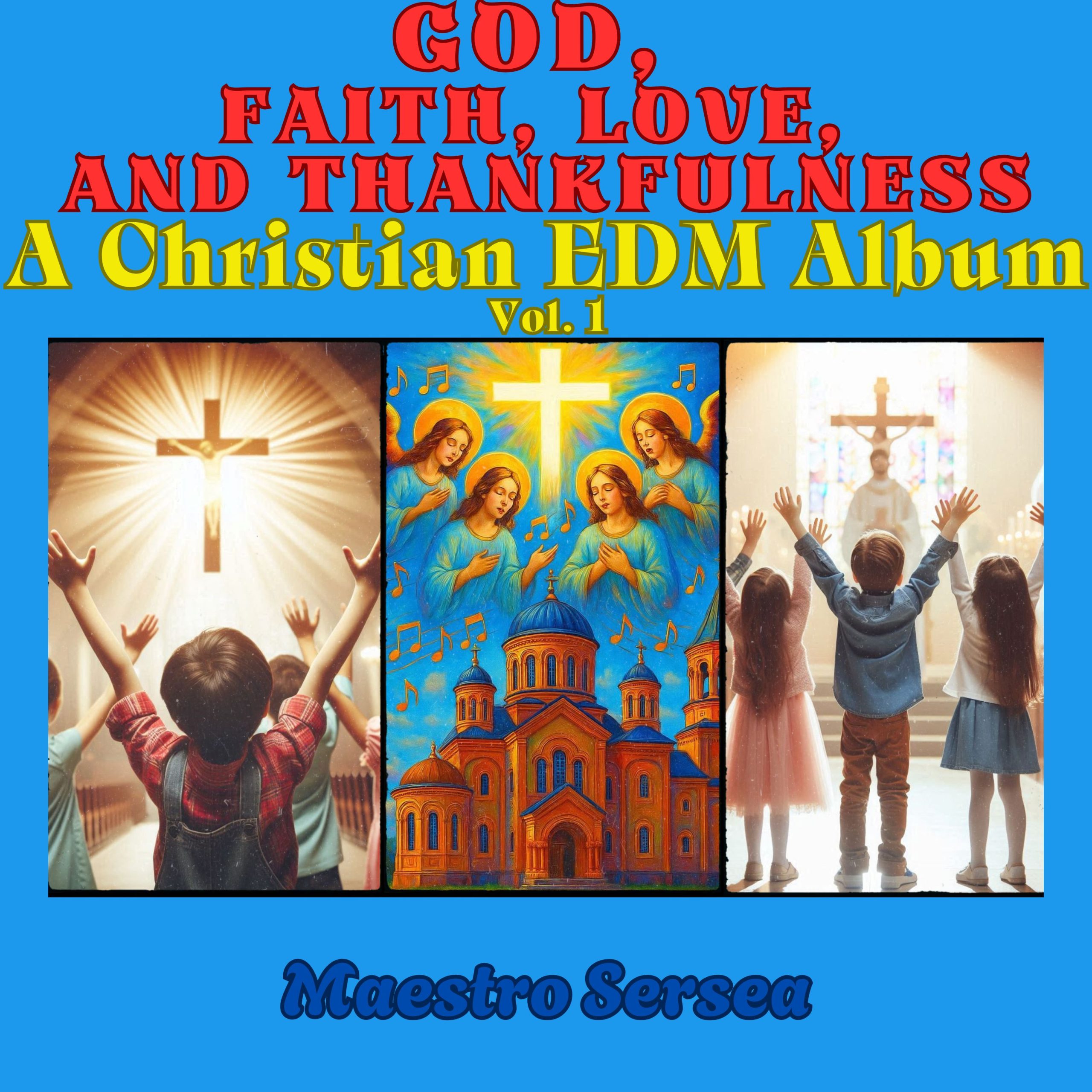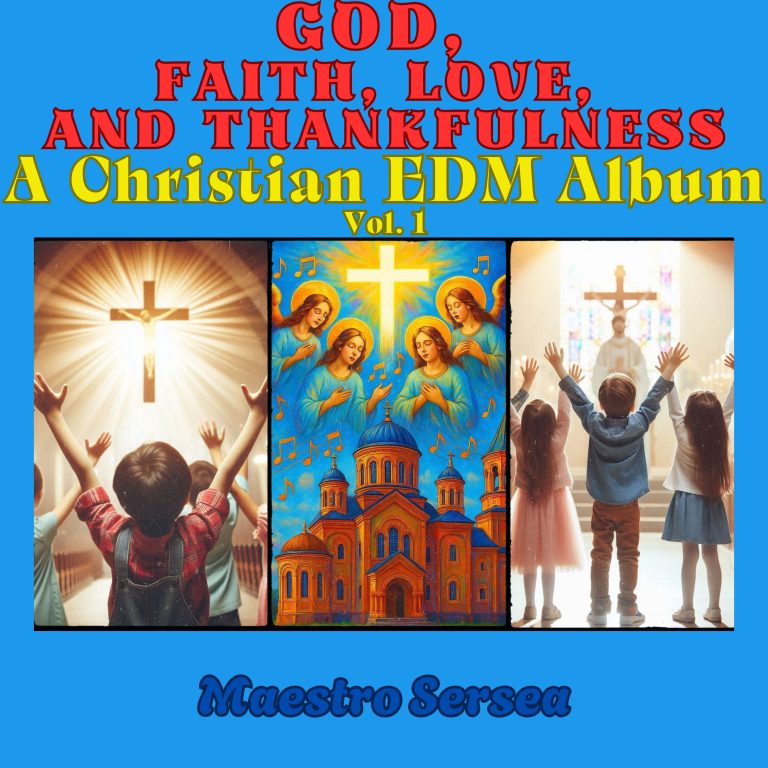
God, Faith, Love, and Thankfulness Album Cover
Lyrics
Light of the World 1 and 2
[Verse]
Snow is falling
Light so bright
Candles flicker in the night (oh, oh, yeah!)
Hearts are glowing
Spirits high
Joy is here
No need to hide
[Prechorus]
Feel the love
It’s everywhere (everywhere!)
Lift your hands into the air
[Chorus]
Light of the world
Shining down (shining down!)
Breaking the dark
All around
Joy to the earth
Love has come (love has come!)
Christmas is here
For everyone
[Verse 2]
Voices rising
Songs unfold
Tales of wonder
Ages told
Stars are dancing
Skies awake
Hope is burning
Never fades
[Prechorus]
Feel the love
It’s everywhere (everywhere!)
Lift your hands into the air
[Chorus]
Light of the world
Shining down (shining down!)
Breaking the dark
All around
Joy to the earth
Love has come (love has come!)
Christmas is here
For everyone
“Light of the World 1 and 2” – Conservative Christian Analysis
Summary
“Light of the World 1 and 2” celebrates Christ’s incarnation as ultimate hope and joy for all humanity. The song emphasizes Christmas as God’s love entering darkness, with believers joyfully proclaiming this reality through worship and witness. It portrays Christmas not as commercialized holiday but as profound theological event—God becoming human to illuminate spiritual darkness and bring salvation’s joy to everyone.
Biblical Foundation
Christ as Light – “Light of the world, shining down, breaking the dark all around” directly echoes John 1:5 (“light shines in the darkness”) and John 8:12 (“I am the light of the world”). Conservative Christianity affirms Christ’s incarnation as God entering darkness to illuminate lost humanity.
Incarnation’s Joy – “Joy to the earth, love has come, Christmas is here for everyone” reflects Luke 2:10 (angel announcing “good news of great joy”) and John 1:14 (Word became flesh, full of grace and truth). Christmas celebrates God’s love made tangible in human form.
Universal Scope – “Christmas is here for everyone” emphasizes salvation’s offer to all humanity. John 3:16 teaches God loved world, offering redemption universally. Conservative evangelicalism maintains gospel’s inclusive offer despite exclusive claim that Christ alone saves.
Hope’s Permanence – “Hope is burning, never fades” reflects Romans 5:5 (hope doesn’t disappoint) and 1 Peter 1:3 (living hope through resurrection). Christ provides enduring hope transcending temporal circumstances.
Witness Through Joy – “Voices rising, songs unfold, tales of wonder, ages told” suggests believers proclaiming incarnation’s wonder. Matthew 5:16 calls believers to let light shine before others through good deeds and testimony.
Darkness Confrontation – “Breaking the dark all around” portrays Christ’s light as active, not passive—actively displacing darkness. Ephesians 5:8-14 teaches believers as light exposing darkness.
Celebratory Worship – “Hearts glowing, spirits high, lift your hands into the air” reflects Psalm 100 (joyful worship) and Psalm 95:1-2 (singing joyfully). Incarnation warrants exuberant celebration.
American Christian Context
Christmas Reclamation – “Christmas is here for everyone” boldly asserts Christ-centrality against cultural secularization. Secular society pushes “Happy Holidays,” commercial materialism, and Santa mythology while marginalizing Christ. This song reclaims Christmas’s sacred meaning.
Anti-Commercialism Statement – “Candles flicker in the night…hearts glowing, spirits high” emphasizes spiritual joy over material acquisition. Conservative Christians push back against Christmas becoming consumer orgy, reclaiming its theological significance.
Darkness Acknowledgment – “Breaking the dark all around” recognizes contemporary America’s spiritual darkness—secularism, materialism, moral relativism, despair. Christ’s light offers genuine alternative to cultural darkness.
Universal Offer Emphasis – “For everyone” stresses gospel’s inclusive offer. Conservative evangelicalism must maintain tension: Christ alone saves (exclusive claim) yet all are invited to accept (inclusive offer). This song emphasizes universality of invitation.
Wonder Restoration – “Tales of wonder, ages told” suggests recovering Christmas’s sense of divine mystery and miracle. Consumer culture reduces Christmas to transactions; Christianity restores wonder at God becoming human.
Joy as Counter-Witness – “Joy to the earth…joy is here” presents believers’ gladness as apologetic. In anxious, depressed America, authentic Christian joy testifies to gospel’s transformative power.
Incarnation’s Centrality – The song emphasizes God-becoming-human as Christmas’s core, not nativity sentimentality or gift-giving tradition. Conservative theology insists on incarnation’s theological significance—God entering history to accomplish redemption.
Public Proclamation – “Voices rising, songs unfold” encourages believers’ public celebration and witness. Christians must proclaim Christ’s coming boldly in pluralistic society, not privatizing faith.
Assessment
Theologically sound celebration of incarnation as central Christian reality and history’s pivotal event. Effectively reclaims Christmas from commercialization and secularization through explicit Christ-centrality. Emphasizes gospel’s universal offer while maintaining its exclusive salvific claim. Particularly relevant for conservative Christians defending Christmas’s sacred meaning against cultural dilution. Combines theological substance with joyful celebration—showing Christianity as supremely joyful news. Doctrinally faithful and culturally prophetic.
